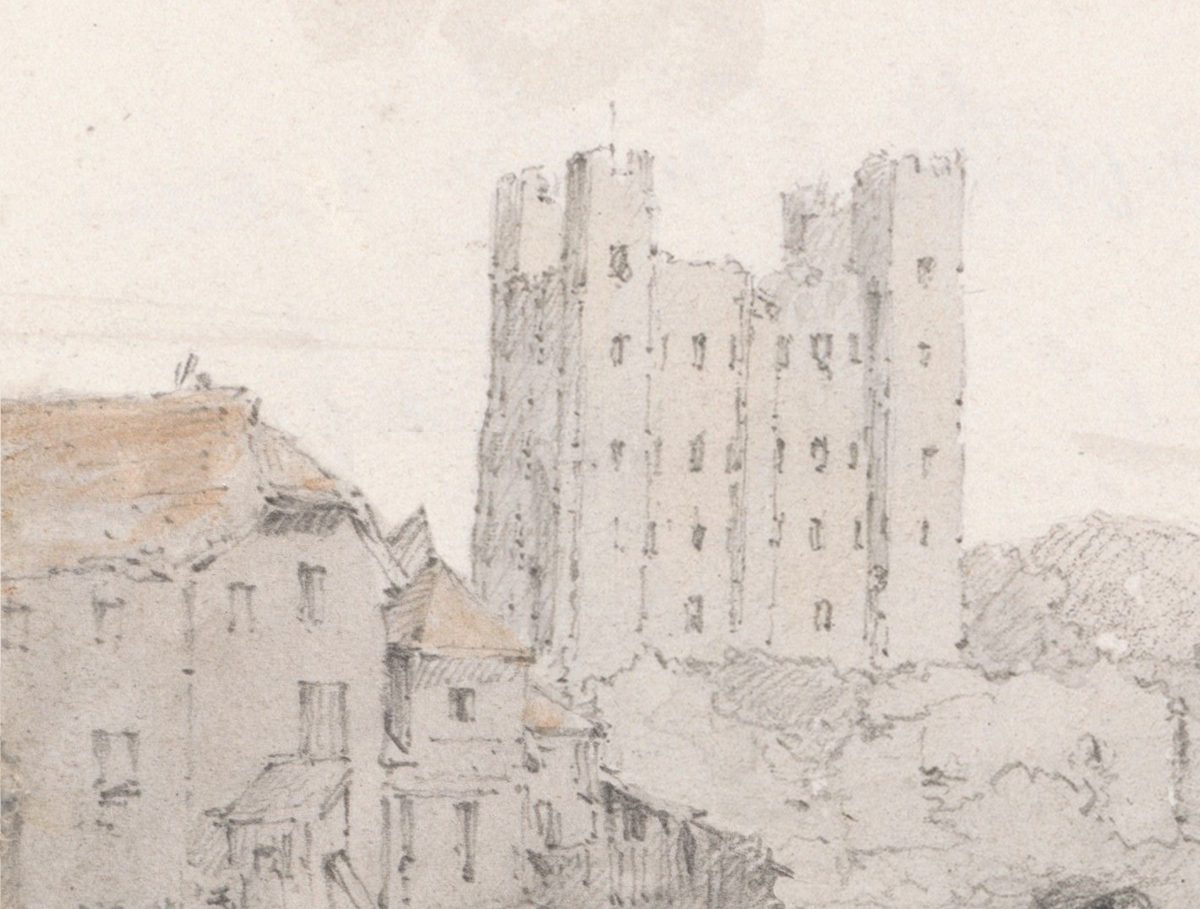Gloucester Castle was a Norman-era royal castle, likely constructed by the Anglo-Norman, Roger de Pitres, the post-Norman Conquest Sheriff of Gloucestershire during the reign of William the Conqueror.
At the time, the castle was a simple motte and bailey design, replaced with a new stone castle in 1110-1120. Over the centuries, the castle would evolve into a large stone fortress and royal residence, often used by Henry III during the baron’s war when it was besieged in 1264–5.
The castle defences were maintained until the mid-15th century, with much of the stonework being re-used in the construction of roads and other buildings. By the mid-17th century, all the interior buildings around the curtain wall had been demolished, leaving only the main gatehouse and the keep which was being used as a gaol (jail).
In 1840, the site was substantially rebuilt with flanking brick wings, a new gate and administration block, operating as a Category B men’s prison until it was decommissioned in 2013.
In 2015, archaeologists from Cotswold Archaeology found evidence of the original castle during excavations within the prison’s basketball court, as well as the remains of walls dating from the 18th century.
Most notably are the foundations of the keep walls measuring 12 feet wide, which were discovered two feet beneath the surface.
Archaeologists estimate that the keep was originally between 20 to 30 metres long, and 20 metres across, with architecture that resembled the White Tower at the Tower of London.
Speaking to Gloucestershire Live, Neil Holbrook from Cotswold Archaeology said: “The castle was the first in the county to be built of stone and houses three chapels, two drawbridges and a royal chamber for the king and queen.”
“It would have been a powerful symbol of Norman architecture. As you came into Gloucester, you would have seen the cathedral and the castle, which is representative of how important the city was in Norman Britain”, added Holbrook.
Header Image Credit: Public Domain Dedication (CC0 1.0)





